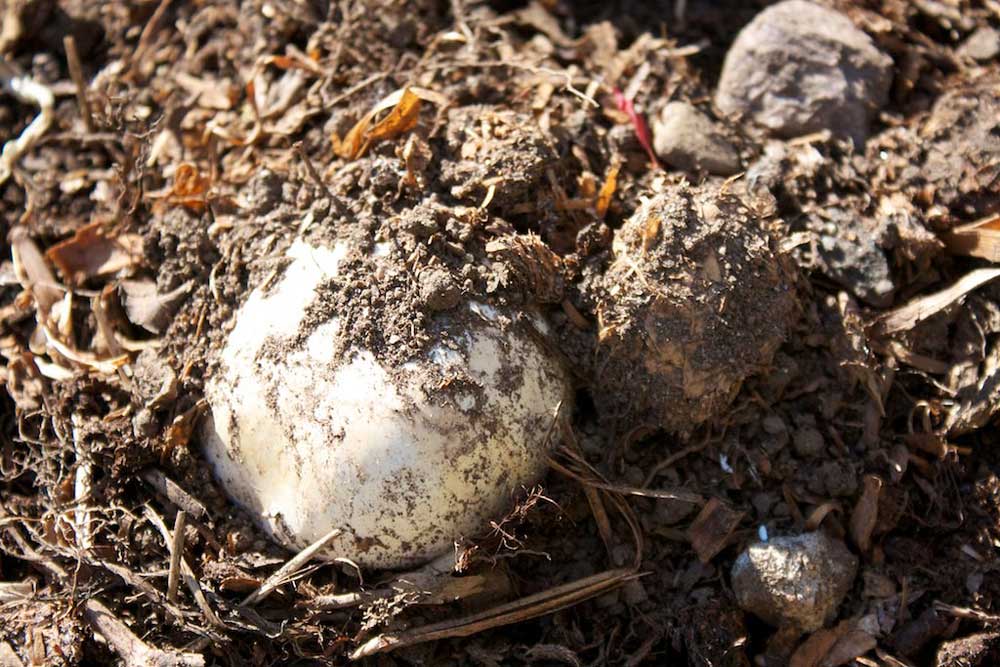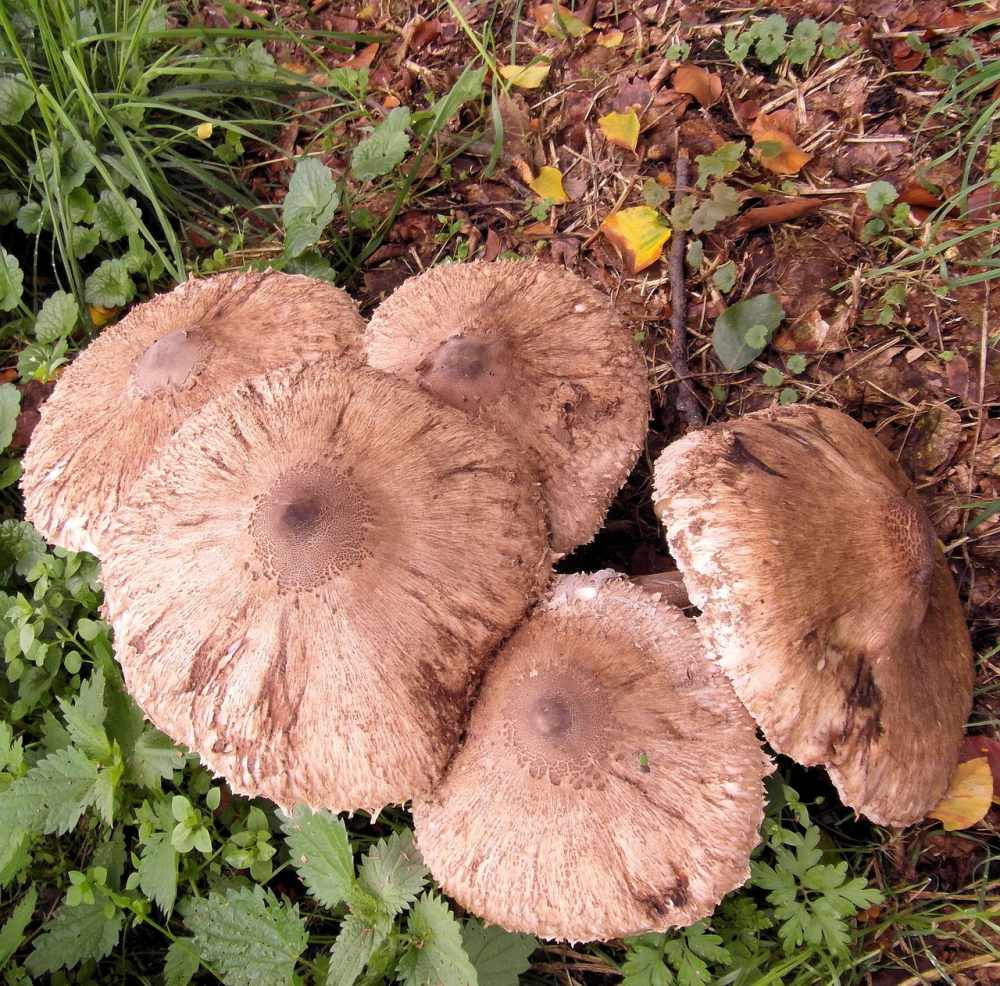Mushroom Compost For Your Organic Gardening Needs
Fertilizers, be they granular or liquid ones, are the best ways to get your flowers blooming and your vegetable patch to perform well. But, as we all know, not all fertilizers are created equal. That’s where mushroom compost comes in. As an organic fertilizer, it really takes the cake.

Packed with organic matter and often used as a good soil conditioner and a first-rate mulch, mushroom compost is earning its well-deserved place as a gardening staple. If you want to make the color in your garden last and keep your blooms and evergreens colorful, mushroom compost is your go-to choice.
What is Mushroom Compost?
Contrary to what the name might suggest, mushroom compost has no traces of mushroom in it. In fact, the fungus is crucial to creating the fertilizer since it breaks the organic matter you mix in the soil. This leaves you with a soluble and slow-releasing organic fertilizer that fuels the vegetables and blooming plants in your garden.
So in effect, you’re using the soil that was used to grow mushrooms. It’s mostly an alkaline soil, though, so the compost left behind though nutrient-rich isn’t suitable for certain plants such as pieris, camellia, rhododendron, and azalea. As a matter of fact, the whole ericaceous family doesn’t thrive on mushroom compost. The same goes for fruit plants.
But aside from that, vegetables in general and brassicas, in particular, are fond of mushroom compost. The nitrogen in the fertilizer helps your cabbages and broccoli grow bigger and faster. That tomato patch will give you an abundance of red, flavor-rich produce when you sprinkle a layer of mushroom compost around the roots of the plants to improve water retention and prevent pests.
But what really makes mushroom compost such a valuable addition to your garden soil is that it can be tailored to your specific needs. A slight change in the recipe produces an organic compost with a different chemical structure that best suits the type of soil or plants you intend to grow. In this case, there’s no one size fits all as far as mushroom compost is concerned. You make it the way you and your plants like it.
Benefits of Mushroom Compost
We touched in passing on the various uses and benefits of mushroom compost. But since these benefits are varied and since the process of creating the compost itself is involved and not-so-simple, it pays to know why you would want to go the extra mile of creating this compost in the first place. Here are some of the most common uses of mushroom compost.
- The first advantage of using mushroom compost is that it costs next to nothing compared to organic compost products you buy at the store. Most of the material you use will be leftovers that you would often discard.
- Mushroom compost is full of nutrients that your vegetables and evergreen need all year round.
- Because of its slow-release quality, the compost doesn’t burn the plants and provides nutrition for longer periods of time. You sprinkle it once and it stays in the soil for months at a time.
- You can use it with different types of garden plants. From herbs and vegetables to flowers and some fruits, mushroom compost is an ideal soil supplement.
- Mushroom compost improves the water retention of the soil thus reducing the times you need to irrigate the soil and keeps the topsoil moist even in hot summer months.
- If your garden soil is too acidic, mixing it with mushroom compost acts as a conditioner and improves the quality of the produce.
- Use mushroom compost in place of mulch to prevent the spread of pests and keep weed growths at bay.
- It’s low on heavy metals and has a pH level of 6.6 making it neutral.
- Besides its cost-effectiveness, the compost is also abundant. For every 1 pound of mushrooms, you get 5 pounds of mushroom compost.
How to Make Mushroom Compost?
The process of making mushroom compost is a lengthy one. It takes plenty of time and preparation. But once you have the precious dark soil, you can do whatever you want to enhance your soil and improve the quality of your produce.
Generally speaking, that process goes through three main steps. Preparing the soil, then composting and finally pasteurizing and sterilizing the compost. Let’s dive into each step in more detail.
Preparation of Raw Materials
Here you choose which materials will go into the mix and make your substrate. You’ll be mostly using agricultural and organic materials. Depending on the type of compost you desire, choose the right materials for your needs. Common materials include horse manure mixed with straw, corn cobs, lime, gypsum, poultry manure, and peat moss.
Both lime and gypsum are important for the growth of the mushroom. The straw needs to be wet and crushed. You can use a crusher machine to break it down. Maintain moderate moisture levels throughout this phase and make sure the pile of components has enough oxygen, nitrogen, and carbohydrates. Add the manure and gypsum mix to the pile of straw in moderate to warm temperatures. Next, add the mushroom bacteria.
Composting
Once you have your ingredients all mixed up, you’re ready for the composting phase. Divide your pile into smaller and more elongated piles. Keep turning the soil every two to three days to accelerate the rotting process and concentrate the nutrients.
This process takes up to one to two weeks. Harvest the mushrooms and wait for the mixture to rot. During this phase, the soil turns dark brown and acquires a sweet smell. The straw becomes soft and the soil crumbles in your hand easily. Finally, the compost retains water and has about 74% moisture in it. That’s when you know that your compost is ready for processing.
Compost Sterilizing
The final phase is to pasteurize the compost. You can use the sunlight to sterilize the mixture. In commercial products hot steam is used to kill the bacteria, seeds, and remove ammonia. For your convenience, you can just turn the pile every few days and allow the sun to sterilize it. The adequate temperature inside the pile needs to at least 140 degrees Fahrenheit for this to work.
It takes up to 4 weeks for the mushroom compost to be fully pasteurized. After that, you can take it indoors and let it cool down. It should be 90 degrees Fahrenheit before you can apply it to your plants. If it’s too hot, it might kill the seeds.
How to Use Mushroom Compost
One of the most common myths about mushroom compost is that you can use it to replace the soil entirely. But that’s not true. Just because it’s used to grow mushrooms, doesn’t mean that you can use it as soil to grow other plants. As we mentioned, the compost is too alkaline for many plants and the plants will simply die.
For best results, you should mix mushroom compost with the soil at a 1:4 ratio. That means for every 75 percent of soil, you add 25 percent of compost. Since it retains water, you should be careful of the soil becoming too moist or waterlogged. Also, keep in mind that mushroom compost is not a replacement for other composts. You should use it in combination with other organic compost to maintain the chemical balance and aeration of the soil. It also injects beneficial microorganisms into the compost.
How to “Cure” your Mushroom Compost
While you can customize what ingredients go into your mushroom compost to create an end product that suits the type of plants you grow, that doesn’t mean that it is the right compost for just about any plant or vegetable.
Since it has a high level of soluble salts, the alkaline nature of the compost makes it harmful for berries of all types as well as azaleas and rhododendrons to name but a few. That said, you can still “cure” the compost by reducing the quantities of salts in your mushroom compost using vermicomposting. It makes the compost more balanced and injects more nutrients into the mix.
Another way to cure your mushroom compost is to let it compost out in the open and water it frequently while it rots. The excess water will leach off the salts leaving you with a chemically balanced compost that you can use with all fruit plants and vegetables.
